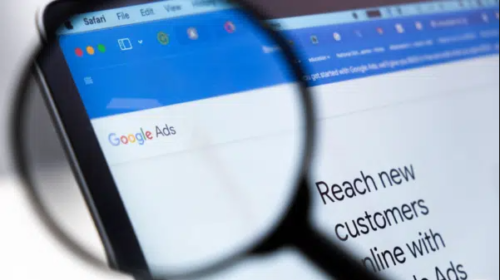3 creative-driven tips to optimize your PPC performance
Explore three actionable ways to leverage ad creative in your PPC campaigns while retaining data-driven insights for peak performance.
Historically, PPC marketers are accustomed to spending hours behind a spreadsheet crunching numbers, analyzing bid models, finding statistical significance for test results, and carefully plotting the next move.
PPC has been very logical, data-driven and more science than art. But the industry is shifting, and creative is arguably one of the best levers PPC managers have to optimize performance.
As a result, performance agencies must adapt quickly and rebalance the scales between art and science.
So, how can you prepare your performance marketing team for this change? Here are three tips to get you started.
1. Focus on asset coverage
First, understand that the shift to using AI for creative optimization is taxing on creative teams.
Ad platforms like Google and Facebook are scrambling to integrate generative AI capabilities.
However, these capabilities are fraught with issues related to ownership, brand safety and adherence to brand standards.
None of these are issues the ad platforms will tackle before rolling these new capabilities out to the masses.
So, how can you balance the need to “feed the machine” without overtaxing your creative team?
You need to focus on asset coverage. Asset coverage is simply a measure of whether you have the creative assets available to run in all the places you’d like.
Optimal asset coverage is going to depend on your specific media plan, but a good rule of thumb for most performance marketers is: 3 asset types x 3 aspect ratios x 3 asset lengths
Asset types
Your creative assets should include video, images and text ads.
- Video: Video is the most underutilized asset, yet 54% of marketers say it’s the most powerful. Video is most effective at engaging audiences and the most powerful storytelling medium making it a must-have for an effective media plan.
- Image: While TikTok and Reels may be solely focused on video, other ad networks are still largely driven by image ad inventory.
- Text: Every good performance marketer should be running SEM text ads.
Asset size/ratio
While there is no shortage of unique asset sizes, advertisers can reach the vast majority of inventory by focusing on three key sizes:
- 1×1: A good image or video with a 1×1 aspect ratio is critical for several reasons. This ratio will allow you to run on most Meta inventory, including Facebook/Instagram Feeds, Instream Videos, Video Feeds, Reels and the right column. Plus, it will allow you to run on some Google responsive ad inventory.
- 9×16: The vertical rectangle 9×16 will provide the best performance for mobile devices. A strong 9×16 will allow access to Facebook and Instagram Stories and Messenger ads inventory alongside responsive search ads on Google.
- 16×9: The horizontal rectangle, 16×9, will give you strong performance for desktop devices on both YouTube and Google.
Asset length
- A 30-second spot with cut downs for 15 and 6 seconds will give you reach across most placements.
- 15-second videos will give you access to unskippable or skippable inventory with just a little more room to tell your story.
- 6-second videos will give you access to YouTube bumper ads, Shorts and Reels inventory.
- 30-second videos will give you access to skippable inventory on most inventory.
2. Diversify your story types
Not all customers will respond to your messages the same way. Some may be more price driven. Others may be more feature driven.
The beautiful thing about AI is that brands no longer need to choose. AI will select the message most likely to engage that particular user. For that reason, it’s important to provide multiple story types:
Product features
- Differentiate your product by showing various features, why they’re important and how it stands apart from its competitors.
Price/promotion or cost savings
- Entice your audience to purchase through a special price or promotion. For longer sales cycles, use this story type to reduce barriers to purchase with a story around cost savings.
Aspirational or introductory
- Introduce your brand and build an engaged audience through aspirational or introductory stories.
3. Nail the beginning
If you do nothing else, remember… you must nail the first five seconds.
Every PPC marketer should be looking for two things in the first five seconds
- Brand: Is it clear what the ad is for? Does the logo appear? Does the product appear?
- Value Prop: Does the audience understand why this is important for them?
Expect that creative teams will push back on these two guidelines. It disrupts the story arc and the creative flow.
But now is a good time to remind people that this is creative built for performance, not branding.
The first five seconds is the time to capture users’ fleeting attention and imprint your brand in their minds before they scroll by.
Balancing art and science
Rebalancing the art and science of performance marketing doesn’t have to be overwhelming.
As performance marketing embraces the full impact of creative, these three guidelines mark the foundation of strong performance creative.
With strong asset coverage, diversity of story types and nailing the first five seconds, advertisers can take advantage of one of the best levers in performance marketing today.




